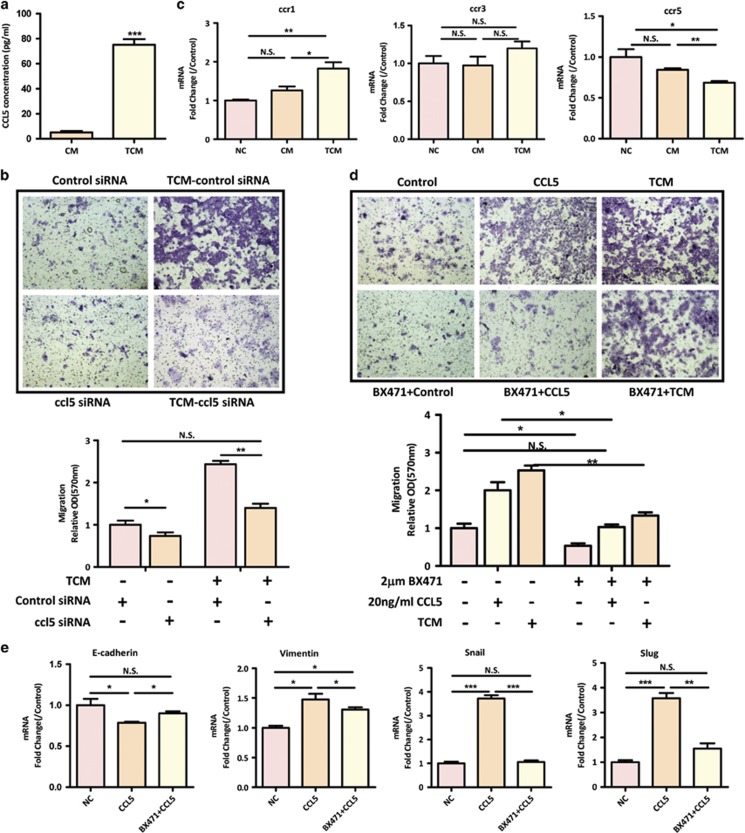Figure 3.
CCL5/CCR1 axis mediates hMSC-enhanced metastatic phenotype. (a) The concentration of CCL5 in CM or TCM was determined by ELISA assay from three independent experiments. ***P<0.001 versus control group; (b) after 24 h of scrambled or ccl5 siRNA treatment, hMSCs were treated with 10 ng/ml TNF-α for 24 h and collected for TCM. SW1116 cells were plated in the upper chamber and evaluated their migratory ability toward TCM by transwell assay. Quantification was presented as mean±S.D. from three independent experiments. *P<0.05; ** P<0.01, NS, no significance; (c) real-time PCR analysis of ccr expression in SW1116 cells treated with CM or TCM for 24 h. Data are presented as the means±S.D. n=3. *P<0.05; **P<0.01; (d) The effect of CCR1 antagonist BX471 on TCM- or CCL5-induced migration was determined by transwell assay. 2 μM BX471 was added into SW1116 cells and seeded in the upper chamber, TCM or 20 ng/ml CCL5 were added in the lower chamber. Quantification was presented as mean±S.D. from three independent experiments.*P<0.05,**P<0.01; (e) 2 μM BX471 was added simultaneously with 20 ng/ml CCL5 into SW1116, the expression of EMT markers was determined by real-time PCR. Data are presented as the means±S.D., n=3. *P<0.05, **P<0.01, ***P<0.001

